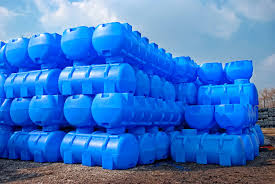Rotomolding, or rotational molding is a process used to create hollow plastic components. It’s an efficient and flexible process that creates high-quality, sturdy products that are consistent in wall thickness. This method is extensively used in a variety of industries, including industrial, automotive, as well as consumer products.
How Rotomolding Works
Rotomolding involves the following key steps that include loading the mold, heating, rotating, cooling, and then demolding. The process starts by placing a pre-measured amount of resin or plastic into a two-part mold. This mold then gets sealed and then heated, usually in an oven. As the mold heats up it begins to rotate around multiple axes. Usually, it is in the vertical and biaxial direction. The rotation causes the plastic powder to melt, and it spreads evenly coat the interior surface that is inside the mould.
Once the plastic has evenly covered the mold, and bonded to form a mold, it is cooled, usually with water or air. The cooling step solidifies the plastic into the final shape. After that, the mold is removed and the newly formed plastic piece is taken out. It is then a smooth, hollow component with uniform wall thickness and excellent strength.
Advantages of Rotomolding
One of the major advantages of rotomolding’s capacity to create huge complex, intricate shapes with no joints or seams. This method is particularly efficient for creating items like bins, tanks and playground equipment. Additionally, rotomolding allows for using a broad selection of materials, including various types of plastics such as polyethylene, polypropylene, and nylon.
Rotomolding is also known for its durability and impact resistance. This process allows for the development of parts with the same thickness of wall, thus reducing the possibility of weak points or failures. It’s also an economical choice for large to medium-sized production runs because of its low cost of tooling compared to other methods such as blow molding or injection molding.
Applications of Rotomolding
Rotomolding is utilized in a variety of applications due to its flexibility and strength of the finished products. Common applications include:
Industrial containers: Rotomolding can be used for creating large storage tanks and containers used in agriculture, chemical processing as well as water processing.
Consumer Goods: Items such as coolers, outdoor furniture and toys are usually manufactured by this method.
Automobile Parts Rotomolding allows you to create durable and lightweight components, such as fuel tanks or protective housings.
Conclusion
Rotomolding is recognized as an effective and flexible method of producing high-quality, hollow plastic parts. Its ability to create intricate shapes that have uniform thickness, coupled with its cost-effectiveness and durability makes it an ideal choice for various industries. For industrial, consumer or automotive purposes knowing the basics of rotomolding is helpful in making informed decisions about manufacturing needs and capabilities.

